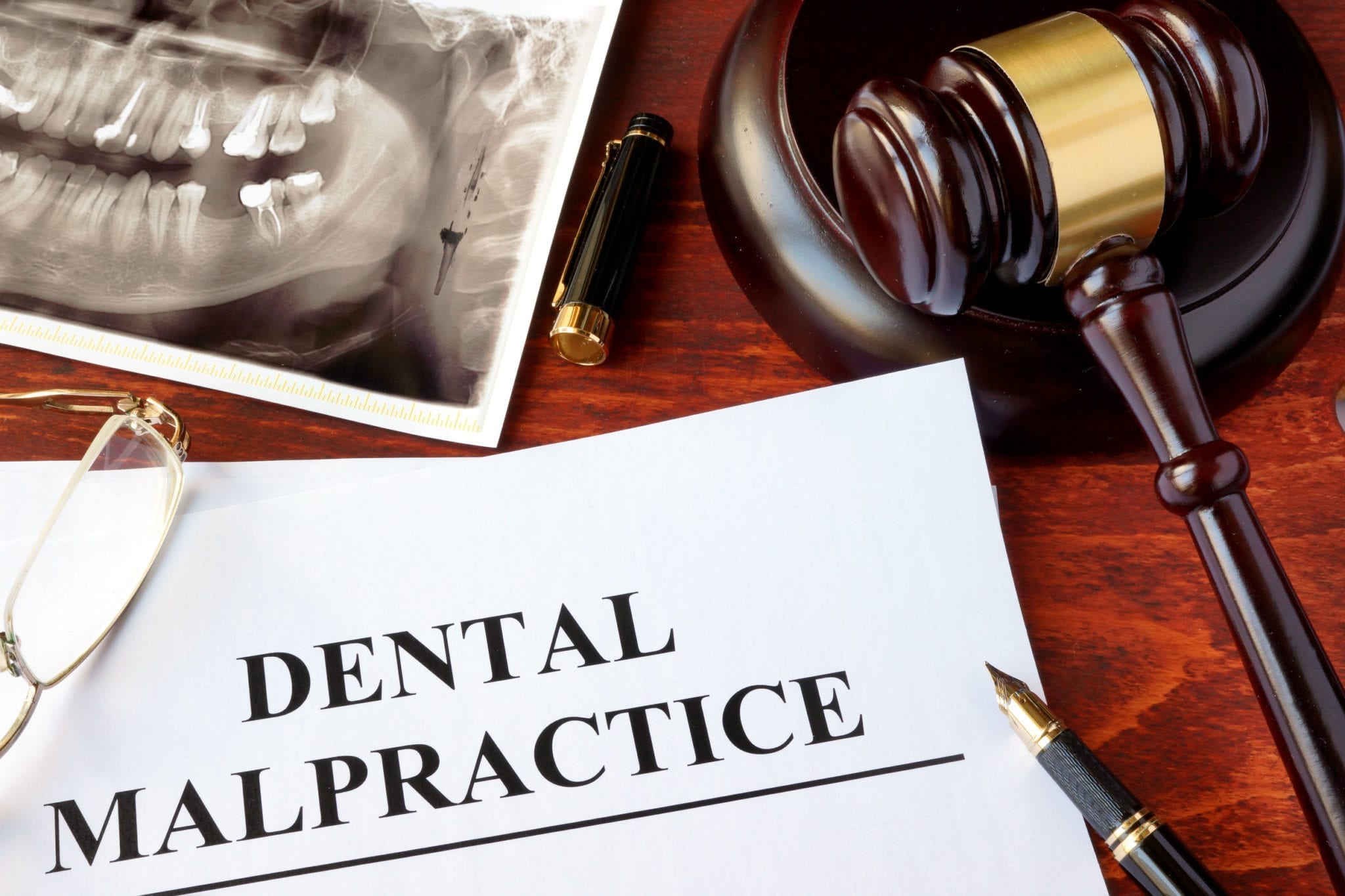Understanding Professional Malpractice: Legal Support for Negligence by Dentists and Chiropractors
Table of Contents
- I. Introduction
- II. What is Professional Malpractice?
- III. Common Types of Negligence in Dentistry
- IV. Common Types of Negligence in Chiropractic Care
- V. Legal Steps for Victims of Malpractice
- VI. Compensation for Victims
- VII. Preventing Professional Malpractice
- VIII. Conclusion
- IX. FAQs (Optional)
I. Introduction
Imagine a young woman, Sarah, who sought dental care for what she thought was a minor toothache. After a rushed examination, her dentist assured her that no serious issues existed and recommended a simple filling. Weeks later, the pain escalated, leading to an emergency visit where she learned that a severe infection had gone undiagnosed, requiring extensive treatment and causing her significant physical and emotional distress. This story illustrates the profound impact that professional negligence can have on an individual's life.
Professional malpractice refers to the failure of a professional to provide the standard of care expected in their field, leading to harm or injury to a patient. This concept is particularly relevant in healthcare, where practitioners such as dentists and chiropractors hold a significant responsibility for their patients' well-being. Legal support plays a crucial role in helping victims like Sarah navigate the complexities of malpractice claims, ensuring they receive the justice and compensation they deserve.
II. What is Professional Malpractice?
Professional malpractice occurs when a professional fails to adhere to the established standards of care in their field, resulting in harm to a patient. This breach of duty can have serious repercussions, not only for the patient but also for the practitioner, who may face disciplinary action, loss of license, and civil liability.
In healthcare, the standard of care is defined by what a reasonably competent professional would do under similar circumstances. For dentists, this includes accurately diagnosing dental conditions, performing procedures correctly, and maintaining a safe and sterile environment. Chiropractors are expected to perform adjustments safely and recognize when a patient requires additional medical attention.
Examples of malpractice in these fields can include failing to diagnose a serious dental issue, performing a dental procedure incorrectly, or providing chiropractic adjustments that lead to injury. Each of these scenarios highlights the potential for severe consequences stemming from negligence.
III. Common Types of Negligence in Dentistry
Failure to Diagnose
One of the most critical areas of concern in dental malpractice is the failure to diagnose significant conditions, such as periodontal disease or oral cancer. When dentists overlook these issues, patients may experience worsening health problems that could have been prevented with timely intervention.
Errors During Procedures
Dental procedures, while often routine, carry inherent risks. Errors such as incorrect extractions or botched root canals can lead to severe pain, prolonged recovery times, and additional medical procedures. These errors not only affect the patient's health but can also result in significant financial burdens.
Use of Defective Equipment
The use of faulty dental tools poses another risk that can lead to injury. For instance, a defective drill could cause unnecessary trauma to the patient's mouth, leading to complications such as infections or nerve damage.
Consequences for Patients
The physical and emotional toll of dental malpractice can be significant. Patients might endure chronic pain, anxiety, and distress, underscoring the need for accountability within the profession. Victims often face long-term repercussions that alter their quality of life, highlighting the critical nature of addressing such negligence.
IV. Common Types of Negligence in Chiropractic Care
Incorrect Spinal Adjustments
Chiropractors are trained to perform spinal adjustments to alleviate pain and improve function. However, improper adjustments can lead to severe injuries, including herniated discs or nerve damage. Precision is paramount in chiropractic care, and any deviation from established techniques can have dire consequences.
Failure to Recognize Conditions
Chiropractors are not only responsible for treating musculoskeletal issues but must also recognize when a patient presents symptoms that require immediate medical attention. Misdiagnosing conditions such as fractures or serious neurological issues can put patients at risk for further injury or complications.
Exceeding Scope of Practice
When chiropractors attempt treatments beyond their training, they may inadvertently harm patients. This includes procedures that require medical intervention or other specialized expertise, which can compromise patient safety.
Patient Harm
The repercussions of chiropractic negligence can be severe, with patients experiencing chronic pain, mobility issues, or psychological effects stemming from their treatment. It is essential for patients to be aware of the risks involved and seek qualified practitioners to ensure their safety.
V. Legal Steps for Victims of Malpractice
Identifying Malpractice
Victims of malpractice should be vigilant in recognizing signs of negligence. A checklist might include:
- Unexplained complications following treatment
- Lack of informed consent
- Inconsistent or incomplete medical records
- Failure to refer to specialists when necessary
Collecting Evidence
Gathering evidence is critical in building a strong malpractice case. Victims should collect medical records, treatment histories, and seek expert testimonies to support their claims. Documenting conversations and obtaining copies of all relevant communications can aid in the legal process.
Filing a Malpractice Claim
Filing a malpractice claim involves several steps, including determining the appropriate jurisdiction, filing within the statute of limitations, and preparing necessary documentation. Each state has its specific requirements, so understanding these is crucial for a successful claim.
Role of an Attorney
Engaging a knowledgeable malpractice attorney is essential for navigating the complexities of legal proceedings. An attorney can provide guidance, ensure that the claim is filed correctly, and advocate for the victim's rights throughout the process.
VI. Compensation for Victims
Types of Damages
Victims of professional malpractice may be entitled to various forms of compensation, including:
- Medical expenses for additional treatments
- Lost wages due to inability to work
- Pain and suffering damages
- Emotional distress compensation
Factors Influencing Claim Value
The potential value of a malpractice claim can be influenced by several factors, including the severity of the injury, the permanence of the damage, and the financial impact on the victim's life. Understanding these elements is critical in pursuing fair compensation.
Fair Compensation
Advocating for fair compensation is vital to address both the immediate and long-term impacts of malpractice on a victim's life. It is not just about covering medical expenses; it is also about acknowledging the emotional and psychological toll that negligence can inflict.
VII. Preventing Professional Malpractice
Tips for Patients
Patients should take an active role in their healthcare by researching providers, seeking recommendations, and asking questions about treatment options. Being informed can help mitigate the risks associated with professional malpractice.
Informed Consent
Obtaining and understanding informed consent is a crucial aspect of healthcare. Patients must be fully aware of the risks and benefits of any procedure before proceeding, ensuring they make informed decisions about their care.
Accountability in Practices
Healthcare professionals must maintain high standards of practice and accountability. This includes continuing education, adhering to protocols, and fostering a culture of safety within their practices. Such measures can help build trust and protect patients.
VIII. Conclusion
Addressing professional malpractice is essential for ensuring patient safety and accountability within healthcare. Legal intervention plays a critical role in helping victims navigate their claims and seek the justice they deserve. If you suspect negligence in your care, it is vital to seek legal counsel to empower yourself in taking informed action.
IX. FAQs (Optional)
Statute of Limitations
The time limits for filing a malpractice claim vary by state, but generally, victims have a limited window to pursue legal action. Understanding these deadlines is crucial to preserving your rights.
Proving Negligence
To establish negligence in a court of law, victims must demonstrate that the practitioner failed to meet the standard of care expected in their field and that this failure directly resulted in harm.
Success Rate for Malpractice Cases
While the success rate for malpractice claims can vary, many factors influence outcomes, including the strength of the evidence and the skill of the legal representation. It is essential to discuss these expectations with your attorney.
References
- The Most Common Chiropractic Negligence Cases - BaxterPro.com
- Can You Sue for Chiropractor Malpractice? - LegalMatch
- California Dental Malpractice Statute of Limitations
- Chiropractic Malpractice: Common Errors and Legal Recourse
- What Should Be Proved in A Medical Malpractice Lawsuit?
Images


Afzal Hosen Mandal
Position: Lawyer at Afzal and Associates
Specializations: Civil Litigation, Criminal Defense, Property Law
Location: Narsingdi Judge Court, Bangladesh
Contact Information:
- Email: advafzalhosen@gmail.com, advafzalhosen@outlook.com
- Phone: 01726634656
Follow Me:
Website & Blog: Afzal and Associates Official Website
GitHub: Afzal's GitHub Profile
About Afzal and Associates: Learn more about us
Contact Us: Contact Afzal and Associates


Comments